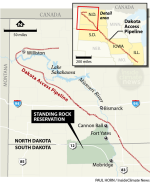(1) Adjusted for family size using the best available equivalence scales that consider economies of scale.
(2) Adjusted for differences in the cost of goods and services among States, sub-State non-metropolitan areas, and metropolitan areas based on the best available data.
(3) Adjusted to account for data on levels of spending on goods and services in prior years and adjusted for cost changes from said prior years to the current year.
(4) Increased for needs related to health insurance for family members, work expenses for the family, and child care needs for each child under the age of 13 in the family, including identification and consideration of “new necessities” such as internet access and funds needed to secure children’s equal educational opportunity.
...
(1) relevant empirical data on prevalence at various income levels of material hardships such as food—
(A) insecurity,
(B) falling behind on rent, mortgage, or utility bills, eviction or overcrowding, and
(C) experiencing homelessness or living doubled up in another person’s home,
(2) past Lower Living Standards implemented by the Department of Labor,
(3) the supplemental poverty measure of the Bureau of the Census,
(4) the Self Sufficiency Standards initially developed by Diana Pearce and Wider Opportunities for Women,
(5) the Census Bureau’s Survey of Income and Program Participation, and
(6) other standards of income adequacy created by experts and public commissions.



